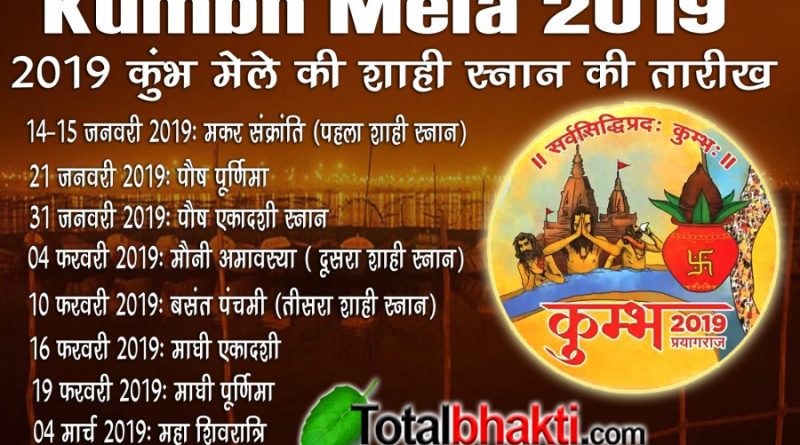KUMBH Mela: World’s Largest Assembly Of Hindu Pilgrims
VARIOUS agencies and Ministries of the federal and Uttar Pradesh are giving finishing touches for the success of the Kumbh Mela to be held in PRAYGRAJ in the northern state from January 15 to March 4, 2019.Claimed to be the world’s largest assembly of pilgrims, four fairs are held periodically at Prayagraj and Haridwar, Nashik and Trimbakin Western state of Maharashtra and Ujjain is on Shipra river. While Haridwar is on the Ganga River, Prayagraj is at the confluence called Sangam of the Ganga, the Yamuna and the invisible Saraswati which according to geo-scientists dried up due to various factors about 1,500 BC. Nashik is on the bank of the Godavari River. Bathing in these rivers after rituals is believed to cleanse the body and mind of the pilgrims. For the origin of the greatest fest of the Hindu community, the principal source remains mythology. The Kumbh Melas over the ages commence on the Uttarayana on January 15 .As Isha Sadhguru says :This motion of the Sun going from south to north is called Uttarayana – the sun is moving towards north and when it reaches north it starts moving south and it is called Dakshinayan. This is also harvest festival in India. It is widely believed that on this date the planetary positions are most favourable for bathing in the holy rivers. It is also claimed by some seers that Rishabh Dev, the first Hindu sage, broke his long vow of silence on this day and bathed in the holy waters of the rivers where the fest is held. As per the legendry samudra manthan meaning churning of the sea Gods, Goddesses along with demi-Gods and those who were opposed to them collectively churned the sea to recover nectar called amrita for longevity . Amrita was recovered and placed in a Kumbh meaning earthen pot .Gods hatched a plot to deprive the demons the opportunity to prolong longevity drinking the nectar. Perhaps as per the plot as the Asuras and the Gods were fighting for the nectar, an invisible being flew away with the pot. As per legend, the carrier of the pot was Dhanavantari who is credited for fathering the Indian system of medicine- Ayurveda. This indigenous system of medicine still continues. He halts at four places where the Kumbh Mela is celebrated. According to some scholars, drops of Amrit fell at the four places where Kumbh Mela is held. There is another legend which says the carrier was Garuda, also known as Aruna, the charioteer of Sun God Surya, or Mohini, female incarnation of Lord Vishnu. She is well-versed in honey trapping. Anyway, devout Hindus are not bothered about the origin of the ancient rituals.it also attracts a large number of tourists who are delighted to witness is a carnival of the several ascetics and sages in saffron attires. They are visible only during the period. From commercial point of view, Kumbh Mela brings bonanza to the mercantile people and enriches states’ coffers as the pilgrims take home mementoes besides spending on food and other necessities.(courtsey:musingsofaseniorjournalist.wordpress.com)




